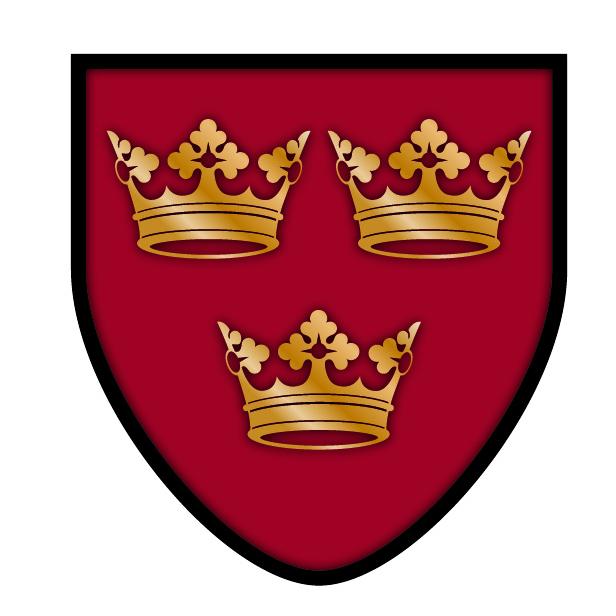This section outlines some of the events in the history of the Diocese of Ely.
1. The story of Saint Etheldreda, which led to the founding of the diocese in 1109
2. The Middle Ages
3. The Reformation, up to more modern times
4. The Diocese changing boundaries and subdivisions.
Etheldreda
- The area of Ely was part of the patrimony of Etheldreda and a religious house was founded there in 673.
- After her death in 679, she was buried outside the church and her remains were later reburied inside, the foundress being commemorated as a great Anglican saint.
- The monastery (for men and women) was destroyed by the invading Danes and the derelict Ely was restored only when King Edgar returned to the area with English rule.
- A new Benedictine monastery for monks only was founded in 970 and the shrine of Etheldreda and her kinswomen restored.
Middle Ages
- Ely was richly endowed by King Edgar and subsequently by the bequests of Beorhtnoth (or Britnoth), an Anglo-Saxon killed fighting the Danes at the Battle of Maldon in 991 and commemorated in a famous poem - only a fragment of which survives.
- Beorthelm had earlier received hospitality at Ely Abbey and after the battle his headless body was brought back to Ely for burial. Over a thousand years later his remains still lie in the Cathedral.
- After the Norman Conquest, Abbot Simeon began to rebuild the Abbey church and this work forms the transepts and nave of the current Cathedral.
- At around the same time, the county of Cambridgeshire, which had been part of the large East Midland diocese (whose bishop had moved after the Norman Conquest from Dorchester-on-Thames to Lincoln) was separated to form a new diocese of Ely.
- The rest of the archdeaconry of Ely, the county of Huntingdonshire, remained in the diocese of Lincoln as the newly-created archdeaconry of Huntingdon.
- The Bishop of Ely was now the Abbot of the monastery at Ely, as well as the bishop of the diocese, and the vast revenues of the abbey were divided so that the bishop had his own independent income.
- The bishop also came to have a great jurisdiction over the northern part of Cambridgeshire, the Isle of Ely. This was a palatinate area, in which it was the bishop to whom the knights made their fealty and the bishop in whose name the courts exercised justice.
- This temporal jurisdiction continued alongside the spiritual jurisdiction of the bishop in the diocese until its final abolition in the 19th century.
Reformation
- At the Reformation the abbey was dissolved, and a new College constituted in its place: the Dean and Chapter, and their officers and staff.
- The church was saved from destruction because it was a cathedral (though much of the mediaeval ornament was destroyed either then, or later during the Civil War).
- Many of the monastic buildings also survived, perhaps because in rural Ely there was no great demand for the land or for the stone with which they were built.
- The boundary of the diocese was unaffected by the Reformation. Bishops and dioceses were abolished during the Cromwellian period, when the Church of England became Presbyterian, but with the Restoration of Charles II, episcopacy was also restored.
Changing boundaries and subdivisions
- By the 1830s, reform was in the air and the Church, like the State, was the subject of much renewal.
- There was a wholesale redrawing of the map of English dioceses, and the diocese of Ely was greatly enlarged by the addition of Bedfordshire, Huntingdonshire and the western half of Suffolk.
- Through the second half of the 19th century, the diocesan map was progressively revised, but the boundaries of Ely remained unchanged until the creation of a diocese for Suffolk (the See of St Edmundsbury and Ipswich) in 1914.
- West Suffolk became part of this diocese and Bedfordshire was annexed to the See of St Albans.
- At the same time, the diocese of Norwich was relieved of its westernmost section, which became part of the Diocese of Ely. With this change, the diocese reached its current shape.
